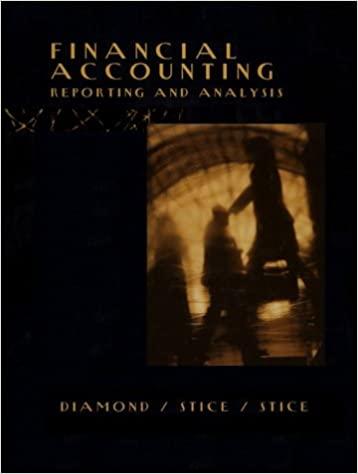


1st order Q = 300 units; Price = $200; Cost = $150 (1st order), $175 (2nd order); Salvage value = $100 Profit = Revenue - Cost ($) - 5,000 (NOT Lost) Sales Sales from 1st from 2nd order Left over order = Demand - Sales inventory Demand = Min(Q, Demand) from 1st order = Q-Sales (units) Probability (units) (units) (units) 100 0.2 100 0 200 200 0.2 200 [0 300 0.3 300 0 400 0.3 300 100 0 Exp. Profit = Exp. 1st order Sales = units Exp. 2nd order sales = units Exp. Left over inventory = units 0 0 17,500 Average size of the 2nd order = Exp. Sales from 2nd order =[ units. 1st order Q = 400 units; Price = $200; Cost = $150 (1st order), $175 (2nd order); Salvage value = $100 (NOT Lost) Sales Sales from 1st from 2nd order Left over order Demand - Sales inventory Profit Demand = Min(Q, Demand) from 1st order = Q-Sales = Revenue - Cost (units) Probability (units) (units) (units) ($) 0.2 100 300 10,000 200 0.2 200 0 200 300 0.3 300 100 400 0.3 400 0 20,000 Exp. Profit = Exp. 1st order Sales = units Exp. 2nd order sales = units Exp. Left over inventory= units 100 0 0 0 Average size of the 2nd order = Exp. Sales from 2nd order =C_ units. Validation that Q = Q(units) Expected Profit sc 0 units maximizes Expected profit: 100 $C $ 200 300 ${ 400 st C. Given Order size Q = [] units, (i) In-stock probability for the 1st order = Probability (Demands Junits) = percent Expected Sales (ii) Fill rate = Expected Demand % from the 1st order, to the nearest whole number. (Including the 2nd order, the fill rate = 100%.) d. Given 1st order size Q=L_ units, Retailer's Expected Profit = $C Retailer's Theoretical maximum profit = (Price - Cost) * Expected demand = $50/unit x _] units = $C The retailer will earn this profit if it forecasts demand with 100% accuracy, so sales = demand at every possible demand level, with no lost sales or left over inventory. Demand-supply mismatch cost = Theoretical maximum profit - Expected Profit = $C $C ]. This reduction in expected profit is percent (to the nearest whole number) of the theoretical maximum profit. 1st order Q = 300 units; Price = $200; Cost = $150 (1st order), $175 (2nd order); Salvage value = $100 Profit = Revenue - Cost ($) - 5,000 (NOT Lost) Sales Sales from 1st from 2nd order Left over order = Demand - Sales inventory Demand = Min(Q, Demand) from 1st order = Q-Sales (units) Probability (units) (units) (units) 100 0.2 100 0 200 200 0.2 200 [0 300 0.3 300 0 400 0.3 300 100 0 Exp. Profit = Exp. 1st order Sales = units Exp. 2nd order sales = units Exp. Left over inventory = units 0 0 17,500 Average size of the 2nd order = Exp. Sales from 2nd order =[ units. 1st order Q = 400 units; Price = $200; Cost = $150 (1st order), $175 (2nd order); Salvage value = $100 (NOT Lost) Sales Sales from 1st from 2nd order Left over order Demand - Sales inventory Profit Demand = Min(Q, Demand) from 1st order = Q-Sales = Revenue - Cost (units) Probability (units) (units) (units) ($) 0.2 100 300 10,000 200 0.2 200 0 200 300 0.3 300 100 400 0.3 400 0 20,000 Exp. Profit = Exp. 1st order Sales = units Exp. 2nd order sales = units Exp. Left over inventory= units 100 0 0 0 Average size of the 2nd order = Exp. Sales from 2nd order =C_ units. Validation that Q = Q(units) Expected Profit sc 0 units maximizes Expected profit: 100 $C $ 200 300 ${ 400 st C. Given Order size Q = [] units, (i) In-stock probability for the 1st order = Probability (Demands Junits) = percent Expected Sales (ii) Fill rate = Expected Demand % from the 1st order, to the nearest whole number. (Including the 2nd order, the fill rate = 100%.) d. Given 1st order size Q=L_ units, Retailer's Expected Profit = $C Retailer's Theoretical maximum profit = (Price - Cost) * Expected demand = $50/unit x _] units = $C The retailer will earn this profit if it forecasts demand with 100% accuracy, so sales = demand at every possible demand level, with no lost sales or left over inventory. Demand-supply mismatch cost = Theoretical maximum profit - Expected Profit = $C $C ]. This reduction in expected profit is percent (to the nearest whole number) of the theoretical maximum profit









